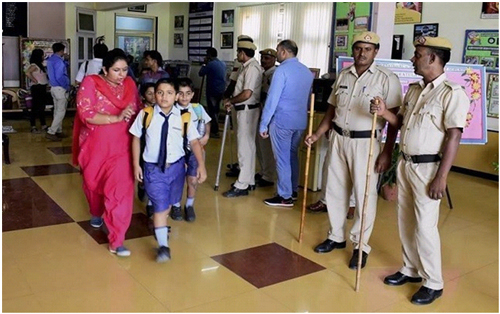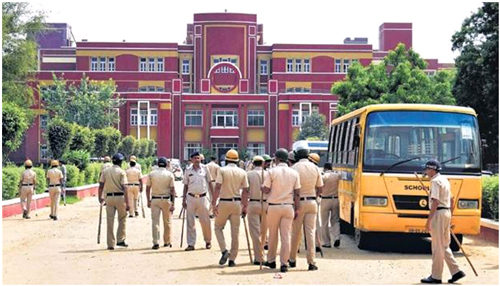 This week, the Central Board of Secondary Education (CBSE) issued a notice to all affiliated schools enlisting guidelines to ensure a child’s safety on school premises. The Lieutenant-Governor Anil Baijal directed the Delhi government to introduce stringent security measures, and link it with the affiliation of the schools.
This week, the Central Board of Secondary Education (CBSE) issued a notice to all affiliated schools enlisting guidelines to ensure a child’s safety on school premises. The Lieutenant-Governor Anil Baijal directed the Delhi government to introduce stringent security measures, and link it with the affiliation of the schools.
The LG directed the Delhi Police to waive verification charges so that schools are incentivized to do background checks on their staff. Though, the plethora of stringent measures is assumed to be a big relief, but how far would it resolve the issue, still remains a big question. Parents are in awe; emotionally overwhelmed with concerns regarding the safety of their child.
The murder of a seven-year-old student in a private school in Gurugram and the rape of another toddler at a school in Delhi’s Gandhinagar, have led to series of episodes of anger spilling on streets. Governments are inherently trapped in reactionary responses, and often make populist decisions in order to calm the public anger.
As a standard modus operandi, new directives are announced reasoned on improving school infrastructure directed at overhauling policies and practices of the school management to make certain students’ safe in school. But, the policy framework required for its successful implementation is kept as a big secret.
Installing a solid security setup on school premises is a must; rather it should made mandatory, but what about a mechanism to look beyond the cameras’. How should school authorities instill good sense or build self-control through social learning to reduce antisocial behavior, in the school staff.
Cultural Orientation

According to the social control theory developed by Ivan Nye in 1958 as an integral component of criminology, “behavioral control through legislation deters what would otherwise be prevalent criminal activity”. Culturally appropriate orientation for the school staff will help them recognize their identity as an essential element of the institution. It would also help staff understand the unique culture, history, traditions and core values of school as an institution. The process would internalize a sense of belonging especially for the support staff.

During the journey from home to school and then back to home, a child interacts with school employees beyond teachers and the principal. For example, a bus conductor who helps the child board and alight the bus; the bus driver; security personnel at the gate managing entry and exit of children, gardeners and carpenters etc.
Majority of the staff hail from an under privileged background, and have experienced a life beset with endless socio-economic issues. As a consequence, their social behavior is highly influenced by unequal circumstances faced in the society. Triggering a possibility that despite security apparatus in place, a person would not be able to deter a criminal act which overrides his or her logical reasoning. The incident in Gurugram School took place in the presence of CCTV cameras’ manning the toilet entry and exit.
Through social learning or cultural orientation, school staff will get an opportunity to learn about the essence of code of conduct of the school; will educate them in the environment they work to help them develop positive relationship with students, as well as with the community at large. It would allow schools to have consistent staff, instead of makeshift arrangements, and help school authorities filter antisocial behavior.
Cultural orientation would help institutionalize good sense in the school staff; and it could be developed as an intervention to counter crimes on school premises. Social learning aim to steer society toward a positive behavior, and could a vital role in weeding out antisocial behavior experienced by school children.
(The writer is development sector professional)